John Jenkins House (1799)
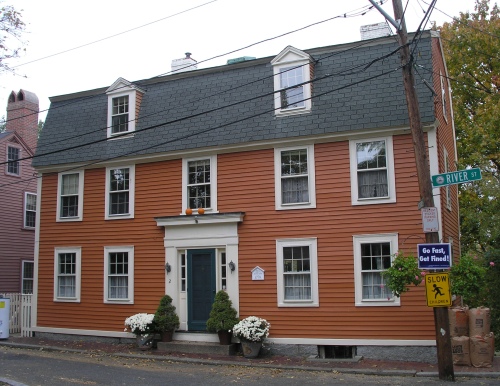
According to the plaque on the house at 2 River Street in Salem, it was built in 1799 for John Jenkins, a tailor.
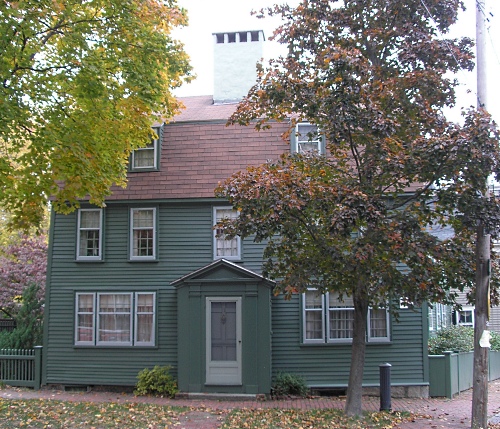
The Jonathan Neal House, at 12 Broad Street in Salem, was long believed to have been built in 1767 for Jonathan Neal, a carpenter, who ran a waterfront warehouse. More recent research has indicated that the earliest parts of the house may actually go back to 1652. An early barn on the lot was enlarged by Neal’s father, also named Jonathan, with the central chimney being constructed in 1680 and other work being done later, as attested in deeds from 1720 and 1767, when the gambrel roof was added to the home.

Maj. John Pedrick, a merchant and militia officer in Marblehead, built the house at 52 Washington Street in 1756. In 1770, he enlarged and remodeled the house, giving it a facade probably inspired by that of the nearby Col. Jeremiah Lee House. As described by Samuel Roads in The History and Traditions of Marblehead (1880),
His ships sailed to nearly every port in England, Spain, and the West Indies, and his transactions were with some of the largest mercantile houses of Europe. At one time, it is said, he owned twenty-five vessels engaged in the foreign trade.
The Revolutionary War, which proved so disastrous to the merchants of Marblehead, bore with especial severity upon Major Pedrick. Several of his vessels were destroyed by British cruisers in Massachusetts Bay, and many others rotted in port. But through it all he proved himself a zealous patriot, and a firm friend to his country. When his son was drafted as a soldier, he charged him not to accept a dollar from the government for his services, and provided him with money to meet his expenses. His daughters made a silk belt for their brother to wear, in which the gold and silver coins were quilted for safety.
In addition to his other losses, Major Pedrick suffered severely by the depreciation of Continental money. At a critical period of the war, he furnished the government with valuable military and naval stores, for which he was obliged to receive a large amount of paper money. In a short time this money became utterly worthless and the entire amount was lost.
Maj. Pedrick was also involved in the incident known as Leslie’s Retreat on February 26 1775. On that date, a British force under Col. Alexander Leslie landed at Marblehead and marched on Salem to destroy cannon and other arms and ammunition gathered there by the colonials. Again quoting Roads:
Suspecting the object of the expedition to be the seizure of several pieces of artillery secreted at Salem, Major John Pedrick hastened on horseback to that town, and gave the alarm at the door of the North Church. He was soon joined by a party of young men from Marblehead, and together they proceeded to the North Bridge, over which the regulars were obliged to pass.
Confronted by patriot militia at North Bridge in Salem, Col. Leslie eventually was allowed to cross on condition he advance only a short distance and then withdraw.
Maj. Pedrick’s House in Marblehead later served as an inn.
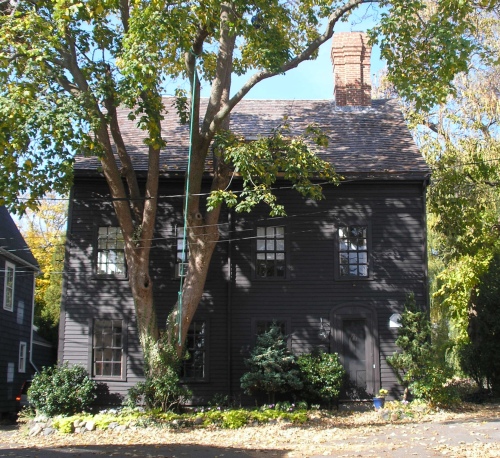
The Capt. Nathaniel Norden House, at 15 Glover Square in Marblehead, was built around 1686 with an integral lean-to. According to Eben Putnam’s Lieutenant Joshua Hewes (1913),
Capt. Nathaniel Norden of Marblehead, son of Samuel, was born 27 Nov., 1653. He was at first a mariner, and later a prosperous merchant. He was one of the selectmen of Marblehead in 1690, and that year he and Capt. Legg are asked by the General Court to explain why they have not kept better order at Marblehead. He was of the Council for Massachusetts, 1708-23.
A later resident of the house was the loyalist Ashley Bowen in the 1760s. As described by Samuel Roads in The History and Traditions of Marblehead,
Though there had been Roman Catholics in Marblehead for many years, there was no attempt to have a celebration of the mass in town until the year 1851. During that year, the Rev. Thomas Shehan, pastor of St. James Church, Salem, visited the town, and celebrated mass in the house of Mr. Dennis Donovan, on the corner of Prospect and Commercial streets. Father Shehan afterwards came to Marblehead twice a year for the purpose of hearing confessions and administering the Holy Communion, the services being held alternately at the house of Mr. Donovan and that of Mr. John Mahoney, on Glover Square [aka the Norden House].

Jeremiah Lee, wealthy merchant and ship owner, built his fabulous Marblehead mansion in 1766-1768. With its lavish interiors and an exterior designed to make this wooden house appear to have a stone ashlar facade, the Jeremiah Lee Mansion in considered to be one of America’s greatest surviving examples of colonial Georgian architecture. Lee died in 1775 and the Mansion remained in the Lee family until 1785, by which time the great merchant’s empire had gone bankrupt. From 1804 to 1904, the Mansion served as the Marblehead Bank, an institution that made remarkably few alterations to the historic building. Since 1909, the house has been owned by the Marblehead Historical Society and is operated as a historic house museum.
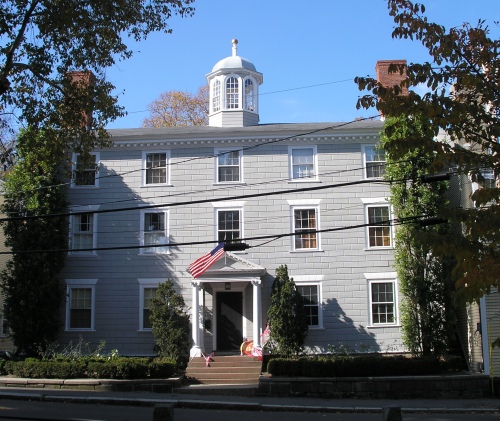
In 1743, Robert “King” Hooper sold land at what is now 185 Washington Street in Marblehead to Justice William Lee, who had plans to build a new house on the site which were not carried out. Instead, the smaller home located on the property was inherited by his grandson, Col. William R. Lee, a merchant and officer in the Revolutionary War, who hired Charles Bulfinch to design an expansion of his home into a mansion that would resemble that of his uncle, Jeremiah Lee. The house features a wood exterior designed to resemble granite.
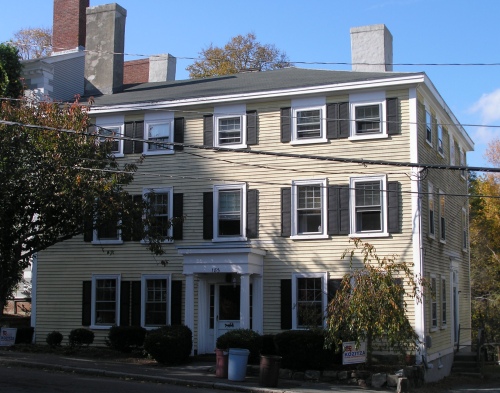
The Georgian-style mansion at 183 Washington Street, across from Abbot Hall in Marblehead, was built around 1740. It has a connection to the Hooper family through Susannah Hooper, daughter of Robert and Mary Glover Hooper. Susannah resided in the house after her marriage to Captain Henry Gallison Gray in 1835. Gray was a shipmaster and later a member of the Massachusetts Senate. The house, traditionally referred to as the Gray Manor, is currently subdivided into multiple apartments.